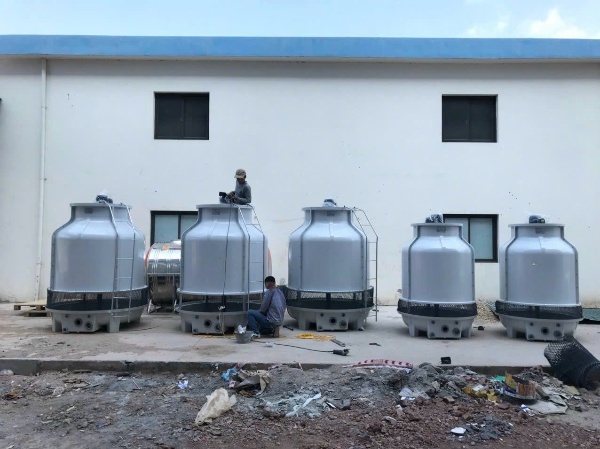Use of Cooling Tower in Steel Plant
The use of cooling towers in a steel plant is critical, extensive, and directly tied to the plant’s operational efficiency, safety, and product quality.
Steel production is an intensely hot process, generating enormous amounts of waste heat that must be continuously removed. Cooling towers are the workhorses for heat rejection in the plant’s water cooling systems.
Here’s a detailed breakdown of their use:
The Core Function: Heat Rejection In simple terms, a steel plant uses water to absorb heat from various processes and equipment. This water becomes hot and is sent to cooling towers. The cooling towers reject this heat into the atmosphere through evaporation, allowing the now-cooled water to be pumped back and reused. This creates a continuous, sustainable cooling loop that
minimizes fresh water consumption.
Key Applications Within a Steel Plant
Cooling towers are integral to two main types of cooling systems in a steel plant:
1. Indirect (Closed-Loop) Cooling Systems:
This is for critical equipment where water quality is paramount. Clean, treated water circulates through a closed loop, absorbing heat from the equipment. This hot closed-loop water then passes through a heat exchanger. On the other side of the heat exchanger, a separate stream of water (from the cooling tower loop) carries the heat away to the cooling tower.
- What they cool:
- Blast Furnace Shell: The immense refractory lining of the blast furnace must be cooled to prevent damage and extend its campaign life. This is often done with staves through which cooled water is pumped.
- Electric Arc Furnace (EAF) Shell and Roof: The shell and water-cooled panels in the roof of an EAF are exposed to extreme radiant heat.
- Basic Oxygen Furnace (BOF) Vessel: Similar to the EAF, the vessel needs protection from molten steel temperatures.
- Ladles and Tundishes: These containers for molten steel are often lined with water-cooled panels.
- Recuperators and Regenerators: Heat recovery systems in coke ovens and furnaces.
- HVAC Systems: Large industrial air conditioning for control rooms and occupied spaces.
2. Direct (Open-Loop) Cooling Systems:
Water comes into direct contact with the process or product. It becomes contaminated but still very hot. This water is sent to a settling basin to remove solids (scale, oil, sludge) and is then cooled in a cooling tower before being reused, significantly reducing water
make-up requirements.
- What they cool:
- Gas Scrubbing: The off-gases from blast furnaces (BFG), basic oxygen furnaces (BOFG), and coke ovens (COG) are incredibly dirty and hot. They are cleaned by being “washed” with high volumes of water in scrubbers. This water absorbs both heat and particulate matter.
- Coke Quenching: Red-hot coke from ovens is quenched with a massive spray of water to cool it down for handling.
- Continuous Casting Machine: The secondary cooling zone sprays water directly onto the steel strand (inside the mold) to solidify the outer shell. This water picks up scale and other contaminants.
- Rolling Mills: Water is used extensively to cool the steel rollers and the steel product itself (e.g., in a hot strip mill) after it has been rolled.
